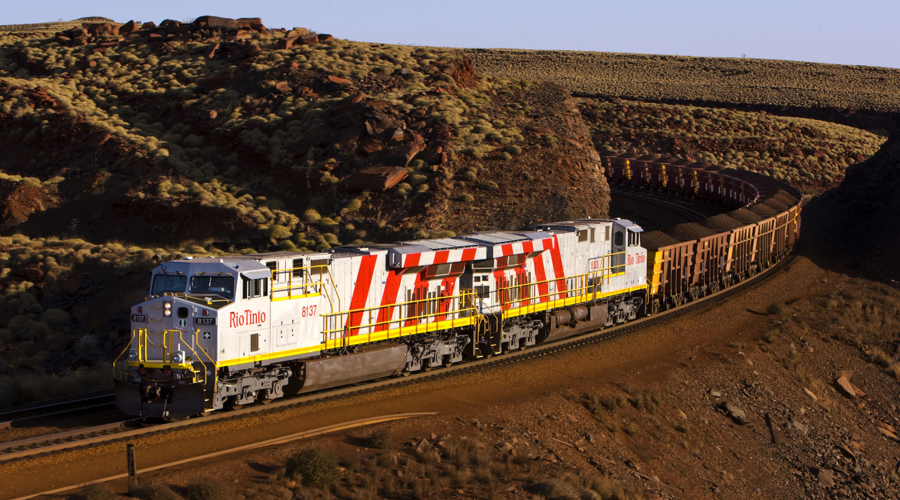
A delay in the rollout of Rio Tinto’s (LON, ASX:RIO) much-anticipated autonomous railway system has forced the miner to cut its iron ore production guidance for 2017 by as much as 20 million tonnes.
Delivering its first quarter results Tuesday, the world’s No. 2 iron ore producer said that despite the holdup it remains on track to meet output target for this year, which is expected to hit a record 350 million tonnes.
Rio’s output from its Pilbara mines, which make up the vast majority of its iron ore production, would drop to 330 million to 340 million tonnes from the 350mt previously forecast, as testing of its AutoHaul technology continues.
The driverless train system, unveiled in 2012, aimed at transforming the industry. The US$518 million project, however, is already at least two years behind schedule.
Output from the Pilbara mines, which make up the vast majority of Rio’s iron ore production, will drop to 330 million to 340 million tonnes from the 350 mt previously forecast.
Rio also continues to delay a board decision of a new iron ore mine in the Pilbara — Silvergrass.
“We continue to experience volatility in commodity prices across all markets,” said chief executive Sam Walsh, who is leaving the company in July.
But that didn’t stop the company from increasing its iron ore shipments in the first quarter of the year by about 11%, while it keeps running its mines at full tilt despite a global supply glut triggered partly by a slower Chinese industrial growth.
Rio Tinto’s first quarter shipments increased to 80.8 million tonnes from 72.5 million in the same quarter last year, but were down from 91.3 million tonnes in the preceding quarter due to a cyclone that interrupted shipments in late January.
In other commodities, Rio logged a 3% drop in thermal coal production compared to the first quarter last year to 5.5 million tonnes, pointing to a yearly total of 16 million to 17 million tonnes.
Production of copper, the commodity where Rio wants greater exposure to offset a high-weighting towards iron ore, fell 2% in Q1 to 141,200 tonnes versus a year ago.